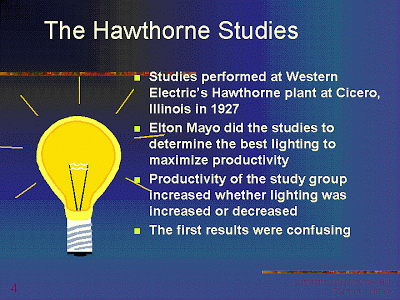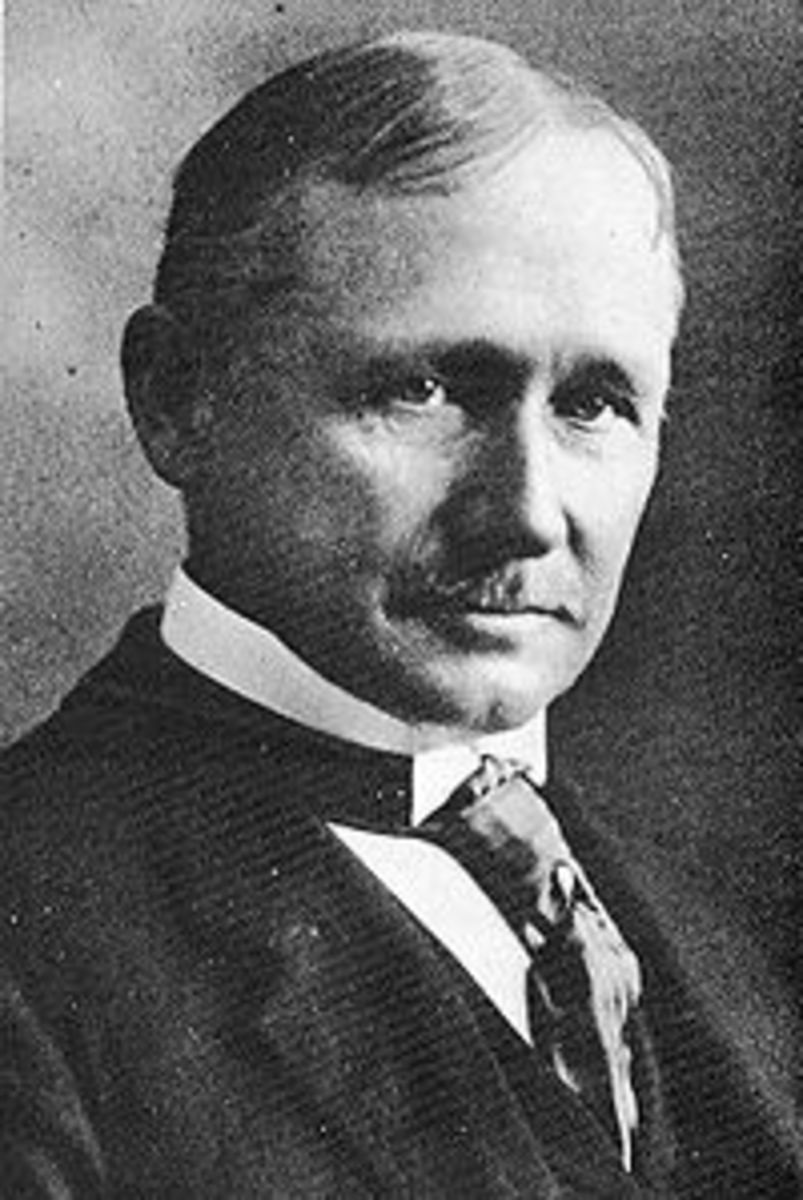The Evolution of Organizational Psychology

Introduction
Organizational psychology focusses not only on the behavior of the workers but also on the effectiveness of the company. The field of organizational psychology has gone through changes since it began and many of those changes occurred because of significant events in history like World War II and unionization. Although organizational psychology, organizational behavior, and industrial psychology sound very similar, there are differences between them that make them unique, which will be discussed. Research conducted to study issues facing organizational psychologist is carried out using different methods of data collection and statistical analysis. In this paper each of these topics will be discussed in further detail.

Organizational Psychology Defined
Organizational psychology strives to understand the behavior of those who work in or for organizations. The knowledge gained through the use of scientific methods is used to help improve the effectiveness of the organization, which in turns leads to a higher productivity level, the delivering of a better product to consumers, and the tendency for becoming more prosperous (Jex & Britt, 2008). There may be some variations of effectiveness based on the type of organization. For instance, whereas prosperity in private organizations may lead to improved job security and increased shareholder value, in public organization it is more likely to lead to improvement in the services offered and reduction of taxes (Jex & Britt, 2008).

Evolution of Organizational Psychology
According to Jex and Britt, 2008, organizational psychology has evolved because of the contribution of many factors beginning with the Hawthorne experiments run by Western Electric Company over a five years period starting in the late 1920s. The experiment was designed to determine the effect of environmental factors on productivity. The Hawthorne effect, which is based on the results of this study, states that any change in the workplace, no matter how small can have a positive effect on employees, although it may not last long. Other developments from this study included the effect of work groups and leadership styles on employee behavior as well as the effect of social factors in general. Around the same time frame unionization was becoming a hot topic. It brought such concepts as participation of employees in the decision-making process and work-life balance into the forefront of organizational psychology. Another factor occurred due to woman taking over jobs traditionally held by men during World War II, which brought with it a whole new collection of work issues that needed to be addressed. This combined with President Truman integrating the military, brought diversity as well as the issues associated with it, into the workforce. This was just the beginning of the organizational psychology movement. From there the human resources perspective brought up issues that they believed stifled the creativity and happiness of the workers. Concepts like personality, attitudes, job satisfaction, family issues, and the effect of stress reflected the changes in the focus of organizational psychology over the years. As technology seemed to bring the world closer together, global issues were addressed as well as the effect of massive shifts in demographics. Project-based work and self-employment versus the more traditional career-based jobs was also a factor in the evolution of organizational psychology. Other factors never dreamed of have also affected this field of study. For instance, the terrorist attack on 9/11 and shootings in schools and places of business by citizens of the United States has brought a focus on workplace safety and emergency planning. While not a new discipline, organizational psychology is newer than many fields in psychology and continues to grow and change as the world, and the people in it, grow and change and the available technology - that almost seems to changes daily – makes options available that were unheard of just a few years ago (Jex & Britt, 2008).

Organizational Psychology versus Organizational Behavior and Industrial Psychology
While the emphases of organizational psychology is on the people working in organizations and on increasing the effectiveness of those organization, organizational behavior focusses more attention on the behavior of the individuals who work in organizations, and on the organization itself as well as the relationship between the two (Jex & Britt, 2008). It involves studying human behavior in a work environment as well as the communication and relationship of the organization with the people who work there with the intention of not only understanding the behavior but also the ability to predict it (Vandeveer & Menefee, 2010). In addition to studying the behavior of the workers, organizational behavior also takes into account the behavior of those running the organizations, including the tactics, and procedures used by the company (Jex & Britt, 2008). While organizational psychology is purely based on psychology, the field of organizational behavior draws from a combination of different disciplines (Jex & Britt, 2008). There is also a financial difference between the two fields. Namely, those working in organizational behavior are likely to be paid higher wages than someone working in organizational psychology (Jex & Britt, 2008). In fact, many of the teachers who originally taught organizational behavior classes in business schools held degrees in psychology rather than business (Jex & Britt, 2008).
The differences between organizational psychology and organizational behavior may be minimal and harder to define, but the differences between organizational versus industrial psychology are more obvious. The focus of organizational psychology is less concrete than that of industrial psychology (Jex & Britt, 2008). It is more social and also more concerned with motivation, teamwork, and development (Jex & Britt, 2008). On the other hand, industrial psychology tends to address more tangible issues like staffing, training, pay, and benefits (Jex & Britt, 2008).

Research and Statistics in the Field of Organizational Psychology
Research and statistics in any psychological field of study consists of the same basic steps. Once a question has been asked, data is collected and analyzed so that an answer can be determined. There are many ways that this can be accomplished, from observing behavior to conducting complex experiments (Jex & Britt, 2008). Observational methods of data collection include simple observation and participant observation (Jex & Britt, 2008). Although this allows the researcher to capture the behaviors as they are happening in the natural environment, it may require many hours and bias can occur (Jex & Britt, 2008). Archival data may also be used, which is easy to find and may reduce bias, but it is an indirect measurement and may not be correct (Jex & Britt, 2008). Organizational psychologists tend to use survey research more than any other method as it is inexpensive and can be used with a large number of people in a short time frame (Jex & Britt, 2008). It is also easier to analyze with statistics (Jex & Britt, 2008). However, there are a number of issues that can arise when using survey research methods (Jex & Britt, 2008). While research using the survey method can be done quickly, designing an effective survey takes time (Jex & Britt, 2008). The major issue with survey research is that the data collected is usually reported by the subject, under the assumption that they understand what is being asked, know the answers and are telling the truth (Jex & Britt, 2008). While experiments can be more expensive to do, they can be used to determine cause, focus on specific variables, and getting participant compliance can be less complicated (Jex & Britt, 2008). The last option, quasi-experiments can still be used to determine cause, but it can be done more realistic setting than an experiment (Jex & Britt, 2008). Even though this method does allow researchers the ability to determine the effect of some of the policies and practices put in place by the organization, it is not always easy to get the access to do so (Jex & Britt, 2008). Once the data has been collected there are many options for analyzing the data as well. They range from basic descriptive statistics to complicated correlational data analysis (Jex & Britt, 2008). What method is the best one to use depends not only on the data that was collected but also on the type of question that the research was designed to answer (Jex & Britt, 2008).
Conclusion
Although organizational psychology focusses on the behavior of those who work in organizations, the type of organization can have an effect on the outcome (Jex & Britt, 2008). For example, private organizations may see different results that public organizations (Jex & Britt, 2008). The Hawthorne experiments are seen by many as a starting point for organizational psychology, but other important changes came about because of woman going to work in traditionally male jobs during WWII and integration of the military (Jex & Britt, 2008). Both of these events caused issues with diversity in the workforce and raised questions that fields like organizational psychology, organizational behavior, and industrial psychology have strived to answer. These answers are found through the use of scientific research methods. The field of organizational psychology will continue to grow as corporations change and evolve, globalization of the workforce continues, and people find new and different ways to make a living.
References
Jex, S. M. & Britt, T. W. (2008). Organizational psychology: A scientist-practitioner approach
(2nd ed.). Hoboken, NJ: Wiley. Retrieved from the University of Phoenix PSCYH/570—Organizational Psychology course website.
Vandeveer, R. C., and Menefee, M. L. (2010). Human Behavior in Organizations, Second
Edition, Published by Prentice Hall. Pearson Education, Inc.








